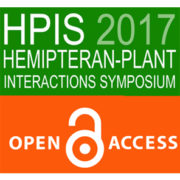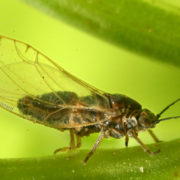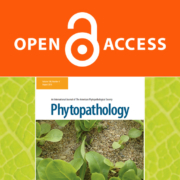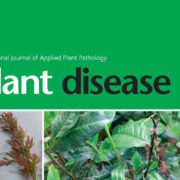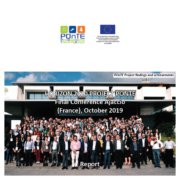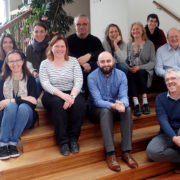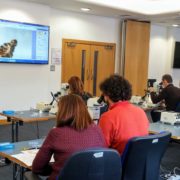Genetic Characterization Of CaLsol Strains Infecting Carrot Psyllids In Southwestern France
Proceedings of the 3rd Hemipteran-Plant interactions Symposium (HPIS 2017), Madrid, Spain, 4-8 June 2017. doi.org/10.5281/zenodo.818688
Bergey Bernard; Eveillard Sandrine; Foissac Xavier
UMR1332 Fruit Biology and Pathology, INRA and University of Bordeaux, CS20032, F-33882 Villenave d’Ornon, France. E-mail: sandrine.eveillard@inra.fr.
Abstract Poster Presentation
The phloem-limited bacterium, Candidatus Liberibacter solanacearum (CaLsol), is responsible of several diseases on Solanaceae (USA, New-Zealand) and Apiaceae such as carrots in several European countries (Spain, France Scandinavia, Germany). This bacterium is vectored by psyllids, Bactericera cokerelli to potatoes, or B. trigonica and Trioza apicalis to carrots. In France, since the 1970s, proliferation of carrot was shown to be associated with a psyllid-transmitted, phloem limited bacterium. In order to reassess disease impact and better characterize the bacterium involved, five organic or non-organic carrot fields were surveyed in 2016 for CaLsol and psyllids in three production areas of Southwestern France. Psyllids were present at spring and summer only in an organic experimental field, but could be captured from September in all fields. The highest level of psyllid populations was reached in October when up to 350 specimens were collected upon 100 sweeps. Psyllids collected on carrots were most probably Bactericera trigonica. CaLsol could be detected by Taqman real-time PCR (Teresani et al., 2014) in psyllids as well as in carrots exhibiting stem proliferation and stunting. CaLsol detection ranged from 0 to 18% in individual psyllids and from 0 to 9% in carrots. In Europe, the two ribosomal CaLsol haplotypes D and E have been characterized based on the 16S rDNA and the 16S-23S spacer sequences. In the present survey, haplotype E was identified in both carrot and psyllids, as well as haplotype D2, a new haplotype differing from the haplotype D by two SNPs. Genotyping using the five most variable gene markers described by Glynn and collaborators (2012) showed that the two haplotypes differed for all five markers dnaG, metG, recA, mutS and adk, with mutS being the most discriminant with 8 SNPs between haplotype E and D2.
This project has received funding from the European Union”s Horizon 2020 research and innovation programme under grant agreement No 635646: POnTE (Pest Organisms Threatening Europe)
Published on June, 2017 by HPIS.CSIC

